EDITOR’S NOTE: This week, Green Plate columnist Christine Burn Rudalevige is, um, on break, and her husband, Andrew Rudalevige, normally a government professor at Bowdoin College, has heroically stepped in and written a special guest column.
“These plates, Dad – they’re not green! Or special!”
We had discovered the bunker.
The snow had finally melted, as March turned to April. My daughter Eliza and I were taking advantage of Christine’s attendance at a three-day workshop – I think it was titled “Green Crabs, Brown Moths, and Artisanal Pine Cones: Imagining the Lobster Bake of the Future” – to do some spring cleaning.
Well, I lie. Actually we were looking for food. We weren’t used to having to fend for ourselves, after all, what with the plethora of chopped seasonal salads, sushi scallops, local dried beans, and Maine-grown flint corn around the place. On green plates. Always, served on special green plates. Surely there were some delicious winter root vegetables lying around somewhere.
But the room we discovered – had the Realtor not shown us this when we bought the house? – was full of something quite different. One wall was stacked with Saran Wrap, jostling for space with mega-sized paper towels. Magazines like Pseudo-Science and UnSustainable Weekly (“50 Fun Pranks to Play on Vegans!”) littered the floor along with scattered Styrofoam takeout containers, Taco Bell wrappers and red plastic plates. In another corner a pile of polyethylene bags grew, topped with a sign designating them “for the landfill.” Peeking out from under the bags was a stack of empty Kentucky Fried Chicken boxes and what looked like a half-full vat of high-fructose cheese whiz.
And next to that, dozing, a hand still clasped around the remains of an extra-large Shamrock Shake, was Christine herself.
Eliza screamed. But Christine only smiled in her sleep. And suddenly it all made sense. This was where Christine vanished to after the Maine Sunday Telegram’s photographer had captured that week’s perfectly plated organic goodness for posterity. This was where the petroleum-based kitchen conveniences, and the people trying to quit them, could secretly live out their days. This room – and Christine’s temporary coma – was proof of Kermit the Frog’s timeless wisdom: it’s just not easy, being green.
Christine’s pulse was strong. But while she was safe, all was not well. Her cellphone showed 26 text messages from Source editor Peggy Grodinsky asking, with increasing urgency, how the moth-crab-pine cone soufflé was coming along. It was deadline day.
And so it was a time for heroism.
“Well,” as the Bard once said (albeit to Mary, not Peggy), “I’m no hero, it’s understood.” But what I am, as a matter of historical fact, is the first published recipe author in the Rudalevige family. And so I stood tall, and turned to Eliza.
“We will make … Bachelor Chicken!”
She looked skeptical, in the manner of all teenaged daughters not convinced of their parents’ sanity. To be fair, her mother was passed out in a hidden room overdosed on minty not-so-green goodness, and her father’s main culinary achievement in recent years had been in the realm of (admittedly impressive) mixed drinks.
And yet, as I hastened to explain, it is true: The first line on my CV is not, in fact, the classic page-turner “Revisiting Midterm Loss.” Instead it boasts a contribution to a now-revered collection of New England cuisine: to wit, St. John’s United Methodist Church Cookbook.
Were it not for the 20th-century religious visionaries of Watertown, Massachusetts, “Bachelor Chicken” might have been lost to time. Instead, it was coming to the rescue.
I turned again to Eliza. “Get out the green plates!” I said.
Addendum: The original Bachelor Chicken was many excellent things, but it was not particularly green – mostly it was pretty beige, until you added the canned tomatoes. Thus sous-chef Eliza and I made key adjustments in order to honor the spirit of this column. We substituted sustainably raised chicken, local whole grains instead of rice, stock from the freezer instead of chicken bouillon, and so on. We even had to change the name. Still, the crucial ingredient remains intact, as close reading of the recipe will show.
April Fools!
Send questions/comments to the editors.

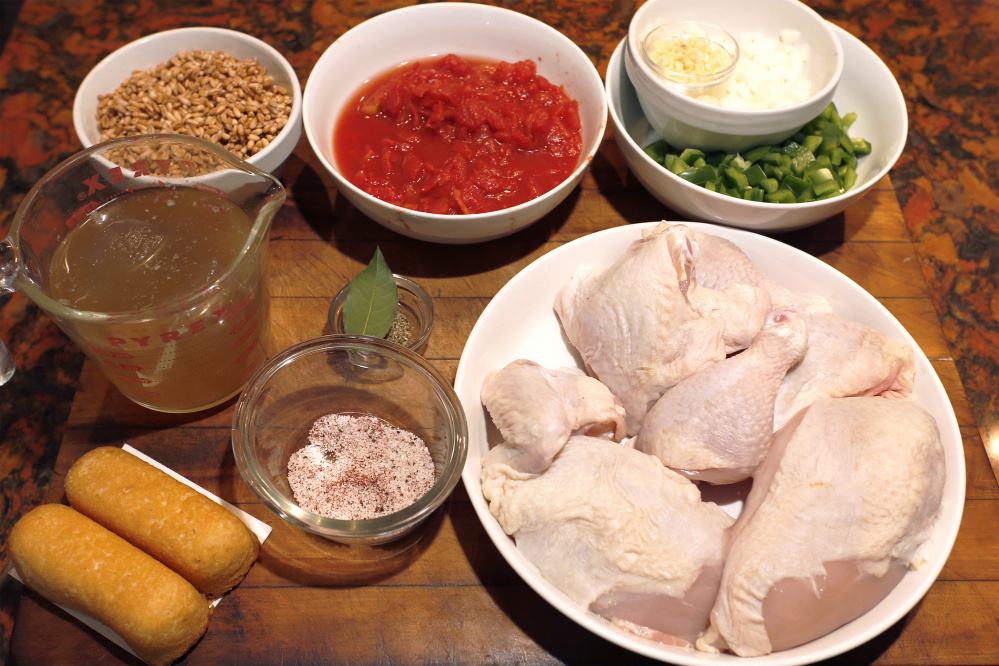
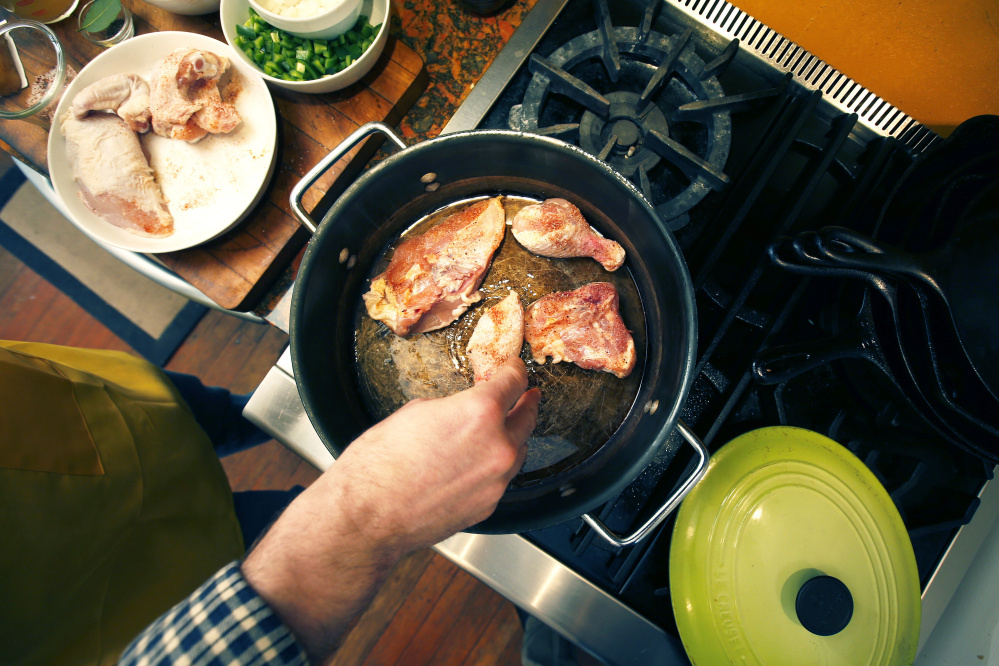
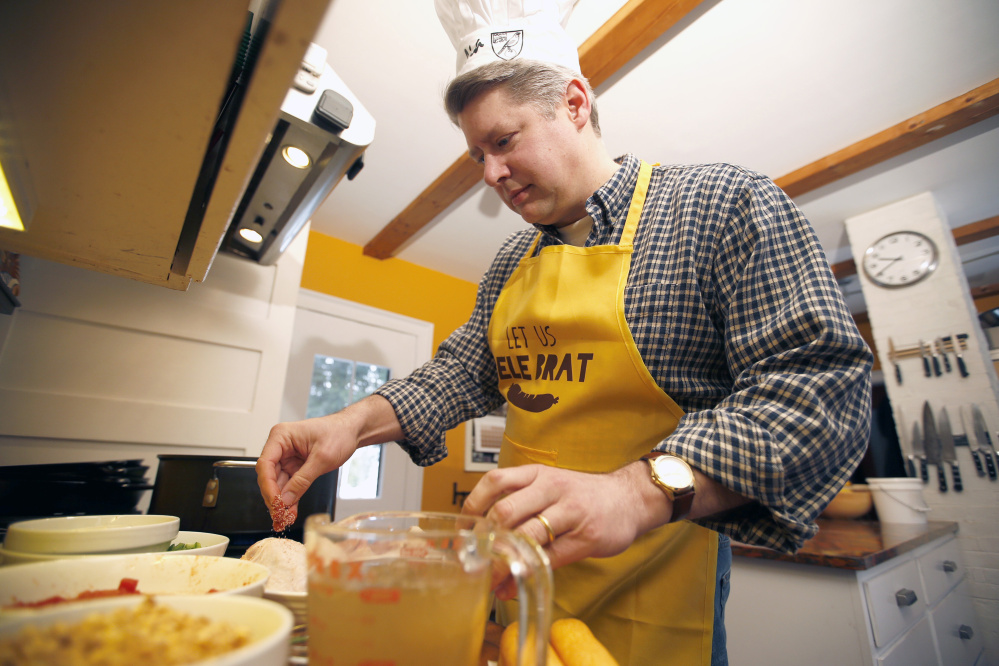
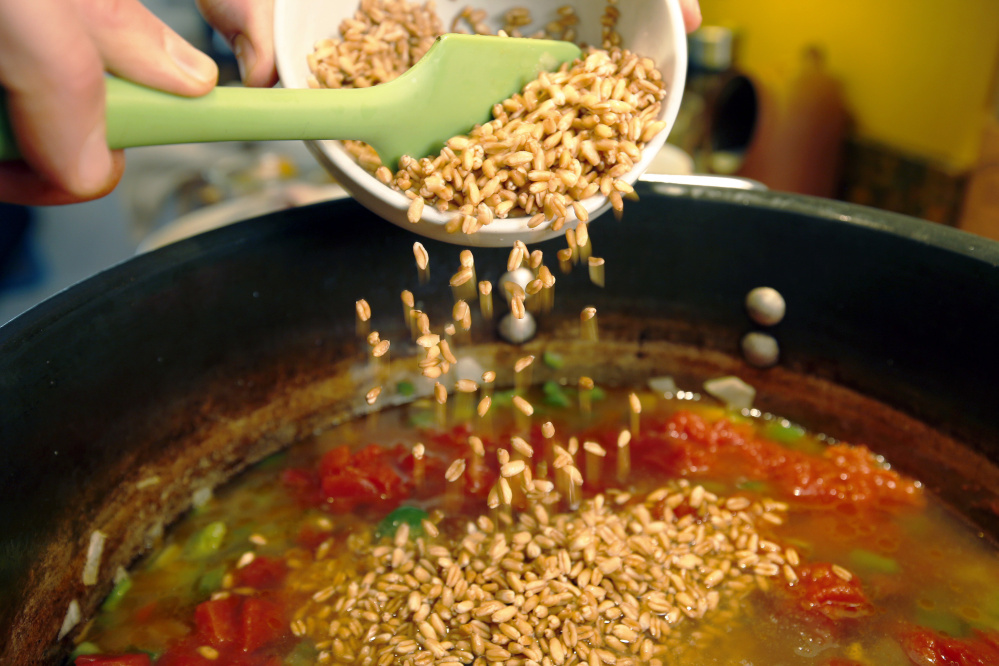
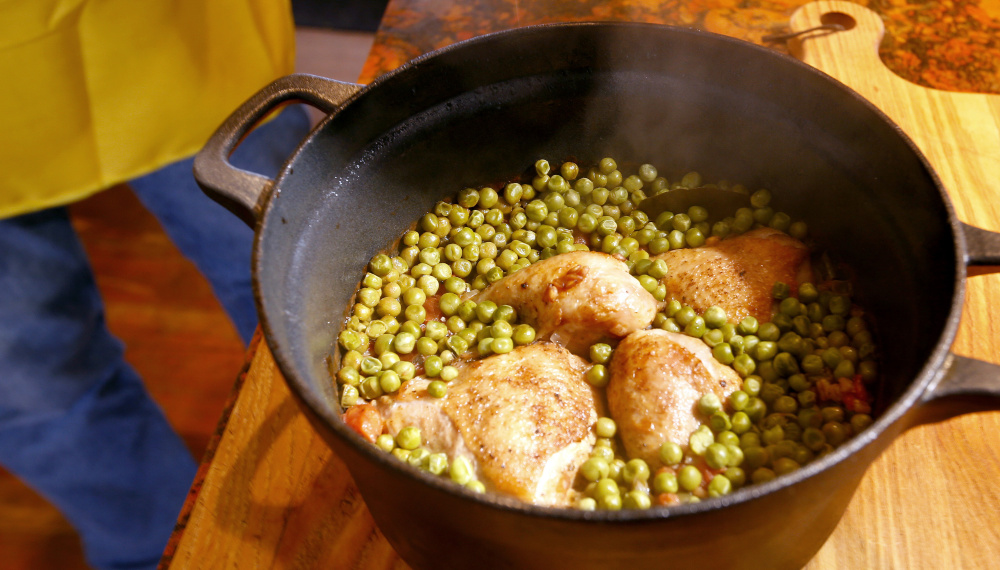




Comments are no longer available on this story